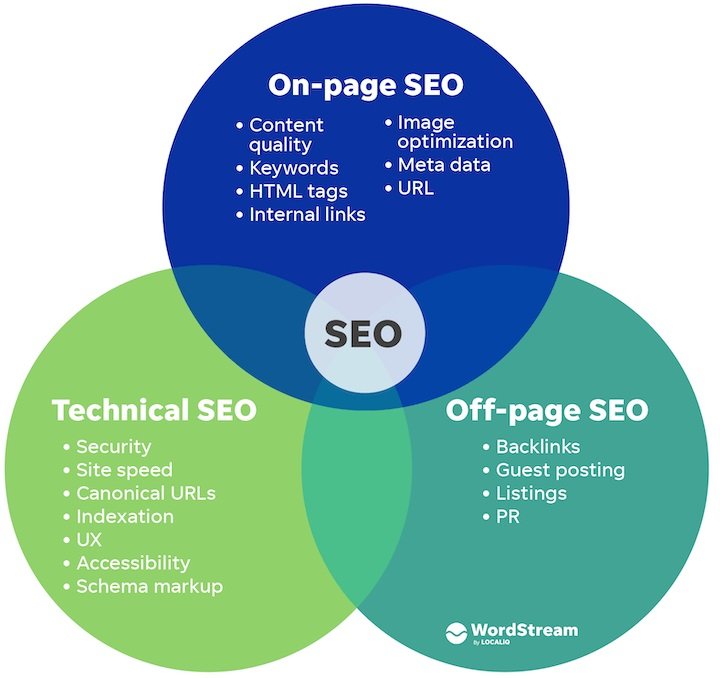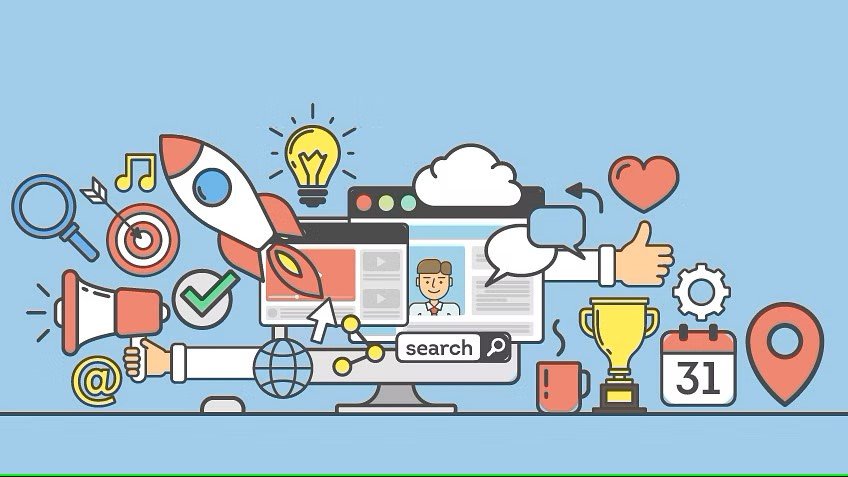Why Understanding SEO Can Help Your Small Business
Credit: Running Robots
Welcome, small business owners, to the world of the Internet. Whether you’re just starting out or have a few years under your belt, every business owner should have a basic understanding of how important the internet is for their company. According to DemandSage, about 5.07 billion people are on the Internet as of 2023 (that’s more than half of Earth’s population!). The more online presence you have, the greater the chance you’ll grow your target audience. There’s so many people on the Internet; who knows how far you can expand your reach?
The part most small business owners struggle with is actually getting those people to your websites. If people don’t see your products or services online, then how can they know about them?
Credit: Drudesk
What is SEO?
This brings us to SEO, or “search engine optimization.” When people want to look something up, they’ll use a search engine (most likely Google). They get millions of results in seconds. Ever wonder why the first websites that pop up are first? It’s because of SEO (or search engine advertising, which we’ll get to later). With SEO, you’ll essentially make improvements to your website’s structure and content to rank higher on these search engines results pages (or SERPs), making it so that more people can discover your business.
But be sure not to get SEOs confused with search engine advertising, which is when businesses pay search engines to place their websites as the top results. The downside of these paid advertisements is that you’ll always have to spend money in order to reach more audiences. Once you stop paying, your website won’t show up as a top result anymore. On the other hand, SEOs give you a more secure ranking in search engines because you’ll actually be improving your online presence. The more you develop your website, the more people you’ll reach. The more people who know about your business, the more your business will grow and thrive.
Credit: WordStream
Types of SEO
There are three types of SEO you should know about:
1. On-page SEO
On-page SEO means optimizing the quality and structure of your website. This is the inside work: actually getting your website to rank higher on search engines to generate more traffic. This includes the content you have on your website, title tags, internal links, and keywords. Search engines like Google use these on-page cues to check whether your web page matches a user’s search intent. If the search engine decides that your page is useful to the user, it will display it higher in the results.
2. Off-page SEO
Off-page SEO is essentially the actions you take outside of your website to improve search engine rankings. It means having other web pages bring attention to your website. This includes backlinks (links from one website to another website’s page) and social media pages.
3. Technical SEO
Technical SEO involves all technicalities of SEO. It’s the actual process of optimizing your website for search engines. This process could include improving your website’s loading speed, making your pages mobile-friendly, and fixing structure issues. This is more than just the actual content on your website; you’re enhancing its elements to improve user experience.
Credit: Shopify
How Do SEOs Work?
In order to better understand SEOs, we should discuss how search engines work to show their results page. Search engines like Google use search crawlers to scan the web in order to gather, categorize, and store billions of web pages in their index. The index is what these engines use to show you their list of results. In order to organize these results, these engines will use their own algorithms based on a number of ranking factors, such as quality of content, relevance to the user’s search, and the website the page belongs to. These engines then change their algorithms based on the user’s interaction with these web pages.
Credit: Simplilearn.com
SEO Ranking Factors
Some ranking factors that search engines consider when displaying their results page include:
Keywords
Backlinks
User Engagement
Consistent release of high-quality content
Internal Links
Page Speed
Mobile-friendly
Credit: Cybertegic
On-page Optimization
There are many different ways to enhance the quality and structure of your website. A few great ways to start include:
1. Keyword Research
Keyword research means figuring out what keywords your target audience is most likely going to use when searching for something online. If you’re a small business that sells crocheted sweaters, your target audience might use the words “homemade” or “knitwear.” After you create a list of possible keywords, plug them into a keyword research tool. This will give you data about these words so you can see where the best opportunities are. These tools consider two main factors: search volume and competition. Search volume indicates how many times that term is searched per month. A keyword’s competition shows you how difficult it is to rank for that word. When considering which keywords to use, make sure that they have a high enough search volume to give you decent reach, but not so high that they become too competitive to rank for. One great and free tool to use is WordStream’s Free Keyword Tool.
2. Create Quality Content
Make sure that your content matches your keywords intent. You want to make sure your user’s have the information they came for, or else they won’t stay on your web page. You’ll want to make sure that your content is eye-catching, explanatory, and organized.
3. Place Your Keywords Accordingly
If you want a search engine to notice your keywords, you’ll want to make sure they’re clear on your web pages. This process includes considering the placement and wording of your title pages and title tags.
Credit: Neil Patel
Off-page Optimization
Some great ways to start optimizing your website off-page include:
1. Earn and Reach out for Backlinks
One passive way of earning backlinks is to produce original, quality content that is worthy enough to get attention from other websites. They can recommend your webpage or use information from your pages and include the link. Another way to get backlinks is to reach out to other websites that can link your content. Either way, getting backlinks increases the traction of your website because other people are being directed to it.
2. Social Media
Using social media is a great way to get other people to know about your business. Your customers can also easily recommend your business to their friends and family by showing them your social media accounts. You can demonstrate your products, update your customers on changes and developments, and increase brand awareness. It’s also a great way of earning referral traffic. The more you grow your social media presence, the more people know about your business, and the higher the chances of you generating backlinks.
Credit: HawkSEM
SEO Tools
A few great SEO tools include Google Analytics and Google Search Console. Google Analytics is a free reporting tool that helps you monitor your website’s general performance and search engine results. Google Search Console (GSC) is also free shows you content-focused and technical SEO. It helps you learn more about your users, including who they are, how they found you, and how they interact with your website.
The Internet has been around for a while, but understanding how to use it to your advantage as a small business owner can be intimidating. As you start developing and optimizing your website, remember to be patient. It can take a few months before you really see results. Be sure to be consistent and focus on quality. Track and measure your progress to see how you’re doing and how to improve. You got this!
If you want to read more about Barbie’s business journey, check out the rest of her website at barbiepatel.com. Or if you want to learn about Barbie’s bridal services, visit her website at cinderellabridez.com.








